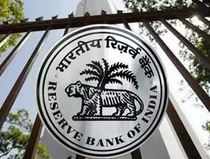Large non-banking lenders and home financiers, such as Tata Capital and PNB Housing FinanceNSE 4.09 %, will likely be able to lower their borrowing costs by up to 25 basis points after the central bank expanded the scope of priority-sector loans (PSL).
Mahindra Finance, Tata Capital, and PNBNSE 0.60 % Housing Finance are now seeking shorter-tenor, MCLR-linked bank borrowings to raise disbursements ahead of India’s festival season beginning early autumn.
“On-lending to NBFCs as PSL will increase allocation of funds and enable NBFCs to borrow at better terms from lending banks,” said Dinesh Prajapati, head of treasury at M&M Finance. “We have been borrowing from banks linked to one-year MCLR, which may now be three-month MCLR. That would save about 20-25 basis points.”
Branded NBFCs normally borrow from banks at MCLR, or the marginal lending rate. But others pay a spread over MCLR. With this latest RBI regulation, both categories are likely to benefit. Smaller NBFCs that pay a spread over bank MCLRs could see the mark-up coming down.
HDFC and Shriram Transport Finance are among the blue-chip firms that could benefit from the central bank’s rule change.
"These measures will increase the availability of funds for NBFCs and could lead to lower cost of funds,” said Rajiv Sabharwal, managing director and CEO, Tata Capital. “Banks can now use NBFCs more to meet their priority sector targets. NBFCs can also borrow more from banks. It will benefit NBFCs that operate in segments such as SME lending and housing."
RBI allowed banks to classify some types of advances to NBFCs as priority-sector loans.
"The PSL status will help NBFC borrow cheap while banks too can expand business,” said Kapish Jain, CFO, PNB Housing Finance. “In a falling rate regime, we will now seek lower tenor MCLR-linked bank loans. The latest move would have a cumulative impact of 15-25 basis points on our bank borrowings, which would trigger new business ahead of the festival season."
NBFCs, struggling to raise funds after the IL&FS defaults, believe Mint Road is seeking to enhance fund flows to non-bank lenders and home-financiers, which are usually at the vanguard of bringing credit to the end user in unbanked areas.
“The broader message is that RBI is nudging banks to lend more,” said Raman Aggarwal, Chairman, FIDC, an industry body for non-banking finance companies. “Ever since the liquidity crisis hit the NBFC sector, we have been aggressively pushing for restoration of this arrangement.”
Published On : 08-08-2019
Source : Economic Times

